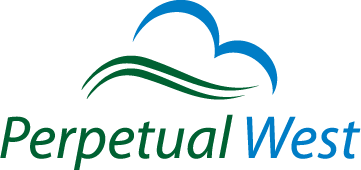Every small and medium business deals with document management. If they’re organized, they likely have files on some sort of shared file server at the office. If they’re really organized and collaborative, they’ve moved their documents to a cloud storage solution like Google Drive or Dropbox. If they’re also using Salesforce they’ve likely wondered what is the best way to relate their files to records in Salesforce for best file organization and archiving. There are many ways to do this however I’m going to highlight 3 realistic ways for SMB’s to get their files in Salesforce along with the corresponding pros and cons to each.
Before I highlight the differences with each way to get files in Salesforce, here’s what’s in common with each option:
- They work on all editions of Salesforce.
- They all allow you to share files with other users collaboratively.
- They all store files in the cloud.
- The all have a desktop sync app for use with PC’s and Mac’s that sync the files locally in a folder by the same name.
- They all have mobile apps that allow you to get access to your files on your device.
- File ownership is what counts towards allocated storage space (ie. shared docs with you that are owned by another user don’t count against your allocation).
Three Ways To Get Your Files Into Salesforce
Google Drive & Cirrus Files
Google Drive is part of the Google Apps for Work suite of apps. Cirrus Files is a 3rd party app that creates a folder in Google Drive for every record you choose in Salesforce.
Pros:
- Every user gets 30GB of storage as part of their Google Apps for Work account to start and native Google documents don’t count towards storage use.
- Google Drive for Work licenses (ie Google Apps for Work Unlimited) give users unlimited storage.
- Works with standard and custom objects.
- Creates a folder for every record in Salesforce if that object is turned on (ex. Accounts). This can be set to be automatic (record is selected that does not already have a folder) or manual (button pressed on record).
- Simply add a file to a Cirrus Folder in Drive and it will automatically sync with Salesforce.
- 5 TB file size limits
- Google Apps for Work native cloud docs (realtime collaboration)
- Users without a Salesforce license still have access to files with a cost effective Google Apps license.
- Works with personal
Cons:
- Custom objects require Salesforce Enterprise Edition.
- Not Free – $5/month/user (50% discount for non-profits)
Dropbox & fileIT
A leader in cloud storage and sharing that many users used personally and then adapted the use for their business needs. Now, Dropbox for business is popular with many businesses and is often used separately from Salesforce.
Pros:
- Salesforce1 compatible.
- Works with standard and custom objects.
- Creates a folder for every record in Salesforce if that object is turned on (ex. Accounts).
- No file size limit for Dropbox upload (via desktop upload), 10 GB limit via the web.
- Users without a Salesforce license still have access to files with a cost effective Dropbox account.
Cons:
- Not Free – $5/month/user (50% discount for non-profits)
Salesforce Files
Pros:
- It’s free with every Salesforce license.
- It’s fully integrated with Salesforce Chatter.
- It’s an integral part of the Salesforce1 mobile experience.
Cons:
- Users often get confused where to put files in Salesforce as the choices have evolved over the years. Refer to this chart for the options. Training is critical for successful use of Files.
- 2GB storage limit per user (unless you buy extra storage)
- 2GB file size limit
- A Salesforce license is required for all users in your organization to collaborate on files
Salesforce is great for CRM. Google Drive and Dropbox are great for cloud collaboration and storage. If you have are a Google Apps for Work account (which includes Google Drive), Cirrus Files is perfect for integrating Salesforce and Google Drive. If you have a Dropbox account, FileIT is what you’re after. If you are heavily invested in Salesforce throughout your whole company then Salesforce Files may be the best fit. If none of these fit the bill, have a look at Box and other solutions on the AppExchange. Regardless of which way you choose, focus on ease of use and simple collaboration. Having your documents accessible from Salesforce is what most users expect. It will help get your ROI from Salesforce and improve adoption.
Is your company looking for help with document management? We can help you get the most out of Salesforce and whichever cloud file storage solution you choose. For more information, call Perpetual West at 1-877-388-6400 or contact us here.

